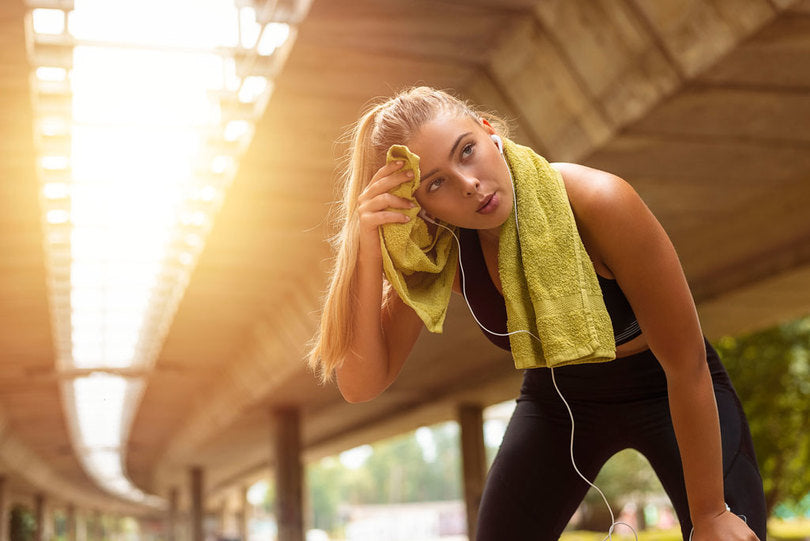When To Do Static vs Dynamic Stretching


There’s been some confusion in the fitness industry about whether you should stretch, and how you should stretch. In particular, the debate over static vs dynamic stretching has left many people confused about what stretches they should be doing and when.
Jump to:
- Static vs dynamic stretching
- What is static stretching?
- What is dynamic stretching?
- What type of stretching should I do pre workout?
- What type of stretching should I do post workout?
All of my workouts have a warm-up with the option of choosing cardio plus dynamic movement. There’s also a cool down at the end of the workout with static stretches.
I can tell you that as a personal trainer I have seen the benefits of warming up properly and cooling down after a workout. Making time for stretching can reduce your risk of injury and improve your range of motion by alleviating muscle stiffness.
It’s so important to stretch before exercising to prepare your muscles and joints for vigorous activity and to help your body to recover well.
Static vs dynamic stretching
Dynamic stretching involves movement that imitates the exercise you will do, and is ideal before exercise.
Static stretching is a position held for 10 seconds or more, and is done after exercise when the muscles are warm.
No matter what type of workouts you like to do, incorporating stretching into your warmup, cool down and recovery can help you to recover quicker and keep your fitness on track.
What is static stretching?
A static stretch is a deep, slow stretch where you hold a single position for ten seconds or longer.
The focus of static stretching is on lengthening your muscles. You will generally focus on particular muscle groups, like the hip flexors and hamstrings, or lats and shoulders.
Static stretching can help to increase flexibility and range of motion. Static stretching should be slow and controlled with a strong focus on deep breathing and holding the stretch at a point of discomfort, not pain.
This type of stretching should never be painful. If you do stretch to the point of pain, gently ease back to a point of slight discomfort.
Yin yoga is one type of static stretching that you can use in your recovery sessions.
When you gently stretch connective tissue during a 15 minute or longer recovery session, the tissue can become more hydrated. Static stretching causes the muscles to lengthen which acts as a form of compression on the blood supply, momentarily restricting flow to the muscles.
Immediately after the stretch is released there is an increase in blood flow to the muscles beyond pre-stretching levels. This provides water and nutrients for the muscles while removing waste products.
In fact, doing static stretching for 10 minutes, twice each day can lead to decreased inflammation and restoration of healthy mobility in connective tissues.
What is dynamic stretching?
Dynamic stretching involves moving a joint or muscle through its full range of motion and repeating the movement, so the stretch is felt gradually in the target area. The motion should be controlled and deliberate, matching the movements you’ll be making during your workout.
This type of stretching can help to prepare your body for exercise. Dynamic stretching can be a part of your warm-up or your morning routine to get your body moving safely.
Unlike static stretching, there are no extended holds in dynamic stretching.
Dynamic stretching helps to boost blood flow, activate the central nervous system, increase range of motion and increase muscle power.
What type of stretching should I do pre-workout?
Before a workout, dynamic stretching has the most benefits for your performance and to prevent injury.
Dynamic stretching before a workout will help to prepare your body for specific movements. By elevating your heart rate and increasing your body temperature, you will prepare the muscles to work efficiently.
Dynamic stretching also primes the nervous system for the movements of the workout. The motion helps to activate the pathways from your brain to the rest of your body.
Some examples of dynamic stretches to do before your workout include: arm and leg swings, or shoulder rotations. The idea is to keep your body moving continuously.
What type of stretching should I do post-workout?
Static stretching is best done after a workout when your muscles are still warm. The focus for post-workout stretching is to lengthen the muscles, slow the heart rate and cool your body down.
Static stretching allows you to focus on specific muscle groups, usually those used in the workout. I recommend allowing at least 5-10 minutes to stretch at the end of a workout, holding a static stretch for the muscles you’ve used for around 20 seconds on each side.
Your post-workout stretches give your body time to cool down and give your parasympathetic nervous system a chance to start signalling your body to rest.
My High Intensity with Kayla programs have a cool down at the end of each workout that includes static stretches. There’s also an active recovery session for each week that includes both foam rolling to warm up the muscles, followed by static stretches held for 30-60 seconds.
Stretching every day can help to improve your flexibility
No matter what your chosen training style is, increasing your flexibility by stretching regularly can have benefits that include better performance and improving your recovery between training sessions.
I know it’s hard to make time for stretching AND exercise, but it really does help to keep your fitness on track.
Stretching is even beneficial if you aren’t active! If you sit at a desk all day, you might try some stretches for your lower back and shoulders to help alleviate any discomfort and improve posture.
I hope that you now have a better understanding of how you should use both static and dynamic stretching as part of your fitness routine!
* Disclaimer: This blog post is not intended to replace the advice of a medical professional. The above information should not be used to diagnose, treat, or prevent any disease or medical condition. Please consult your doctor before making any changes to your diet, sleep methods, daily activity, or fitness routine. Sweat assumes no responsibility for any personal injury or damage sustained by any recommendations, opinions, or advice given in this article.




<#= c.user.username #><#= moment(c.created_at * 1000).fromNow() #>
<#= c.html_body #> <# if (c.images) { #>
<# } #>